Construction Site

How often should safety inspections be conducted on a construction site ?
Safety inspections are crucial for construction sites to prevent accidents and ensure worker well-being. The frequency of these inspections depends on the project's size, complexity, type of work, and local regulations. This guide provides a detailed overview of how often safety inspections should be conducted: 1. Daily Inspections: Include visual checks, tools and equipment, and personal protective equipment (PPE). 2. Weekly Inspections: Cover structural integrity, electrical systems, and fire safety. 3. Monthly Inspections: Assess environmental hazards, emergency response plans, and site cleanliness. 4. Quarterly Inspections: Conduct comprehensive site assessments, review training updates, and ensure regulatory compliance. Unannounced spot checks should also be performed throughout the project to maintain safety awareness among workers. Safety should always be a top priority on any construction site, and regular inspections are essential for achieving this goal.

What are the legal requirements for health and safety training on a construction site ?
Legal Requirements for Health and Safety Training on a Construction Site: - Regulatory Bodies: OSHA, EPA, DOL - Types of Training: HAZWOPER, Confined Space Entry, Fall Protection, Electrical Safety, Scaffold Safety - Frequency of Training: Annual refresher courses, on-site training sessions before starting work, regular toolbox talks during work hours - Best Practices: Implementing a safety culture, providing adequate equipment and facilities, conducting regular safety meetings.
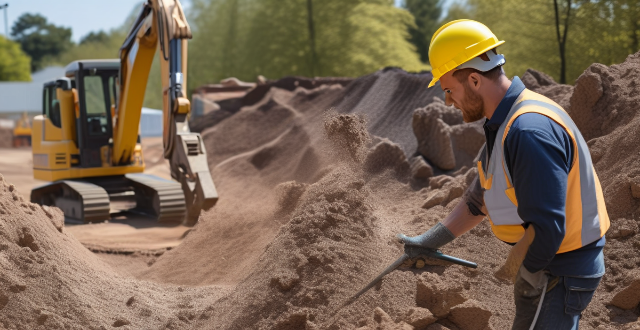
What is the role of personal protective equipment (PPE) in ensuring construction site safety ?
The article discusses the crucial role of Personal Protective Equipment (PPE) in ensuring safety on construction sites. It emphasizes the importance of PPE in protecting workers from physical, chemical, biological, and environmental hazards. The article also highlights the legal implications of not using PPE, as well as its potential to enhance worker productivity. Furthermore, it outlines various types of PPE used on construction sites, such as head protection, eye and face protection, hearing protection, hand protection, foot protection, respiratory protection, and fall protection. The article also provides best practices for using PPE effectively, including proper fit and comfort, maintenance and replacement, training and awareness, and storage and accessibility. Finally, the article concludes that PPE is an essential component of any construction project's health and safety protocols.
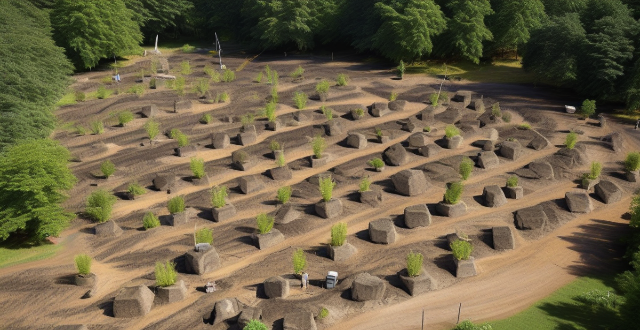
What are the most common causes of construction site accidents ?
Construction sites are dangerous places with various hazards that can lead to accidents and injuries. The most common causes of construction site accidents include falls, being struck by objects, electrical accidents, equipment-related accidents, transportation accidents, fires and explosions, overexertion and repetitive strain injuries, and environmental hazards such as extreme heat or cold, poor lighting, and noise pollution.
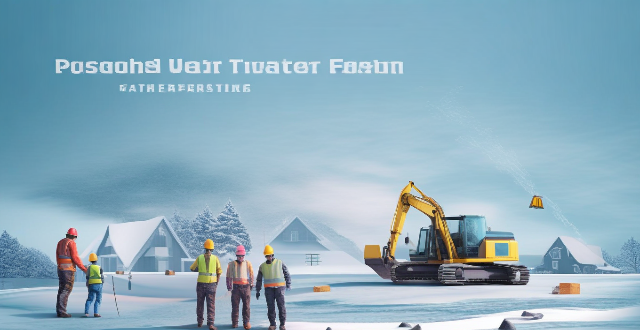
How do weather conditions affect building safety during construction ?
The text discusses the impact of various weather conditions on building safety during construction. It highlights the risks associated with extreme heat, cold weather, rain and water, strong winds, snow and ice, and lightning and thunderstorms. The conclusion emphasizes the importance of monitoring weather forecasts and adjusting working procedures to ensure worker safety.
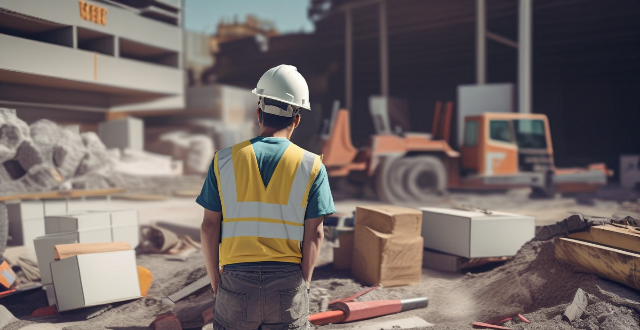
How can we improve safety measures in the construction industry ?
Improving safety measures in the construction industry is crucial for protecting workers and ensuring project completion without delays. A comprehensive approach to enhancing safety includes implementing rigorous training programs, developing comprehensive safety policies, enforcing the use of personal protective equipment (PPE), conducting regular inspections and maintenance, promoting a safety culture, utilizing modern technology, improving housekeeping and orderliness, conducting risk assessments, adopting best practices, and partnering with safety organizations. By prioritizing safety measures, the construction industry can significantly reduce accidents and create a secure environment for all stakeholders involved.
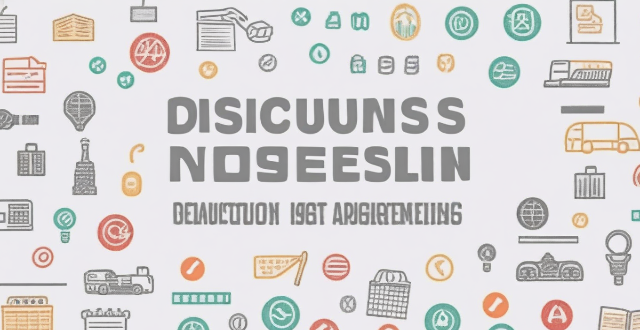
How does poor project management contribute to construction hazards ?
This text discusses the impact of poor project management on construction hazards, including inadequate planning, communication breakdown, ineffective risk management, unrealistic timelines and budgets, and inadequate supervision and training. It emphasizes the importance of effective project management practices for ensuring safety and success in construction projects.
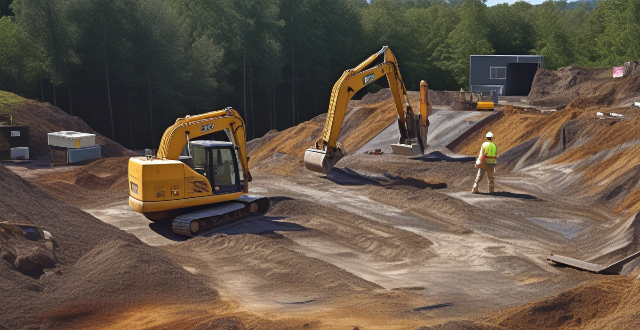
Why is it important to have regular safety training for construction workers ?
Construction sites are dangerous places with numerous potential hazards. Regular safety training for construction workers is essential to mitigate these risks. It enhances awareness of potential hazards, promotes a culture of safety, and ensures compliance with regulations and standards. Ongoing education and training helps workers identify new hazards, develop preventive measures, build a shared responsibility for safety, reinforce safe work habits, meet legal requirements, and maintain insurance coverage. By investing in regular safety training, construction companies can create safer work environments, protect their employees, and avoid costly fines and legal liabilities.

How can I learn more about the history and culture of a heritage site before visiting ?
This text offers detailed steps on how to enrich your knowledge before visiting heritage sites. It suggests reading books and articles, utilizing online resources, listening to podcasts and audio tours, visiting museum exhibits, connecting with local contacts, and accessing academic papers and research. The goal is to appreciate the site's historical context and cultural significance, making the visit more meaningful.

How can I make the most of my visit to a heritage site ?
Heritage sites are places that have cultural, historical, or natural significance. To make the most of your visit to a heritage site, you need to plan ahead, be prepared, and engage with the site in meaningful ways. This guide explores tips and strategies for preparation, on-site experience, and post-visit reflection. By following these tips, you can have a meaningful and enriching experience that enhances your understanding and appreciation of the heritage site.

Can you recommend a heritage site that is off the beaten path ?
Qal'at al-Bahrain is a lesser-known heritage site located in Bahrain. It was once a thriving port city during the Dilmun period and played a significant role in ancient trade routes. The site has revealed numerous artifacts and structures that provide insights into the ancient civilization of Dilmun, including burial mounds, fortification walls, a dhow harbor, and a temple complex. Visiting Qal'at al-Bahrain offers several advantages over more popular heritage sites, such as fewer crowds, unique history, cultural experience, and scenic beauty.

Is it cost-effective for companies to invest in on-site fitness facilities for their workers ?
The text discusses whether it is cost-effective for companies to invest in on-site fitness facilities for their workers. The pros of investing include improved employee health and well-being, attracting and retaining top talent, and increased employee satisfaction and loyalty. However, the cons include high upfront costs, limited use and participation, and maintenance and management challenges. Ultimately, whether it is cost-effective depends on the specific needs and resources of each company.
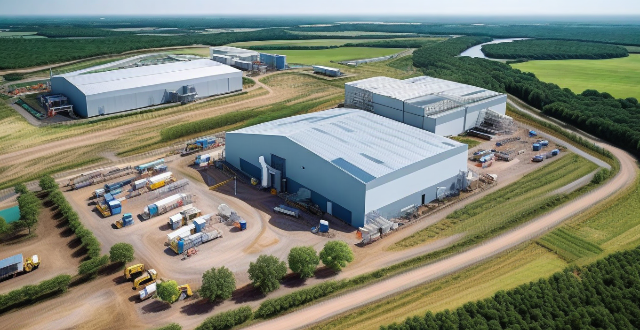
How do building energy efficiency standards affect the construction industry ?
Building energy efficiency standards have a significant impact on the construction industry by affecting cost implications, design philosophy, regulatory compliance, and market trends. These standards require higher initial costs due to advanced technologies and materials but offer long-term benefits like reduced energy consumption and maintenance costs. They also shift the focus of design towards energy performance and sustainability, leading to integrated design processes and innovative solutions. Compliance with these standards is crucial to avoid penalties and legal issues, while certifications like LEED or WELL can provide a competitive advantage. Finally, building energy efficiency standards influence market trends by driving demand for sustainable construction methods and educating clients about their benefits.

How can technology be utilized to enhance safety protocols in construction projects ?
The text discusses how technology can enhance safety protocols in construction projects. Wearable technology, such as smart helmets and vests, drone technology for aerial surveillance and 3D mapping, Internet of Things (IoT) sensors for environmental and structural health monitoring, Virtual Reality (VR) and Augmented Reality (AR) for safety training and real-time information, and mobile applications for immediate communication and health monitoring are some of the tools and systems that have been developed to reduce risks and ensure the well-being of workers on site. The integration of these technologies is not just about introducing new gadgets, but about creating a culture of proactive risk management.

What is green building and why is it important for the construction industry ?
Green building is an approach to design, construction, operation, and maintenance of buildings that aims to minimize environmental impact and resource consumption throughout a building's lifecycle. It focuses on sustainability, energy efficiency, water conservation, materials selection, and indoor environmental quality. The importance of green building in the construction industry stems from environmental concerns, economic benefits, and social responsibility. Green buildings reduce carbon footprint, conserve resources, preserve biodiversity, save energy costs, have higher asset values, and promote healthier living conditions. They also set community standards for sustainable practices and help companies stay ahead of compliance requirements. Green building drives innovation in materials science, design techniques, and construction technology. Overall, green building represents a fundamental shift towards more sustainable and responsible practices within the construction industry.
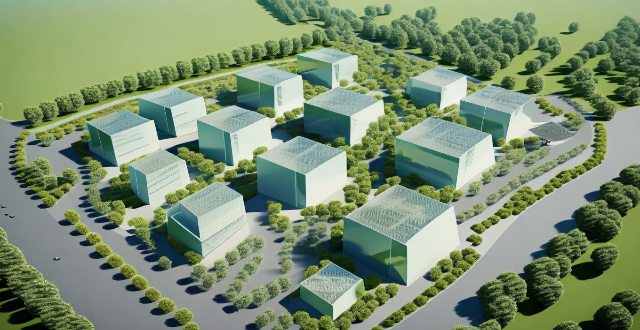
What innovative materials and technologies are being used in modern construction to address climate challenges ?
Innovative materials and technologies in modern construction are being used to address climate challenges. These include green building materials, energy-efficient technologies, water efficiency solutions, and waste management strategies. Recycled materials, eco-friendly insulation, low-emission coatings, solar power systems, smart building management, high-performance glass, rainwater harvesting systems, water-saving fixtures, on-site recycling centers, and waste-to-energy technologies are among the key solutions being adopted. These advancements aim to reduce the environmental impact of buildings, improve energy efficiency, and enhance sustainability.

Which is the best online shopping site for electronics ?
When it comes to buying electronics online, there are several factors that you need to consider before making a decision. These factors include price, selection, customer service, and shipping options. In this article, we will explore some of the best online shopping sites for electronics and help you make an informed decision. Amazon is one of the most popular online shopping sites for electronics. It offers a wide range of products at competitive prices, with fast and reliable shipping options. Best Buy is another great option for buying electronics online. It offers a wide range of products, including TVs, audio systems, cameras, and home appliances. Newegg is a popular online shopping site for computer hardware and accessories. It offers a wide range of products, including CPUs, GPUs, motherboards, and RAM. B&H Photo Video is a popular online shopping site for photography and video equipment. It offers a wide range of products, including cameras, lenses, tripods, and lighting equipment.

What are the benefits of using a top-ranked online shopping site ?
Using a top-ranked online shopping site offers several benefits, including convenience and time-saving, access to a wide range of products, better deals and discounts, easy price comparison, secure payment options, availability of customer reviews and ratings, and hassle-free returns and exchanges. These advantages enhance your shopping experience by providing everything you need for a seamless and enjoyable shopping experience.

How does climate change affect the construction industry ?
Climate change affects the construction industry in various ways, including increased extreme weather events leading to damage and costly repairs, changes in building codes and standards due to new environmental conditions, a focus on energy efficiency and sustainability, potential disruptions to labor availability and supply chains, and increased insurance costs. Builders and developers must adapt by embracing new technologies and practices that promote sustainability and resilience.

What are the key factors to consider when planning an energy-efficient building project ?
The text provides a summary of key factors that should be considered when planning an energy-efficient building project. These factors include site selection and orientation, building design and construction, and energy sources and consumption. The location and orientation of the building on the site can have a significant impact on its energy efficiency, as well as the design and construction of the building itself. Consideration should also be given to the sources of energy used by the building and how that energy is consumed. By considering these key factors during the planning stages of an energy-efficient building project, it is possible to create a building that is comfortable, functional, environmentally responsible, and economically sustainable over its lifetime.

What are the key factors in designing a safe and stable building structure ?
The text provides a comprehensive overview of the key factors that must be considered when designing a safe and stable building structure. It emphasizes the importance of site selection and analysis, foundation design, structural system selection, material selection, and construction quality control in ensuring the well-being of inhabitants and protecting against natural disasters. The text also highlights the need for proper workmanship, inspections, testing, and maintenance to maintain the integrity of the structure over time. Overall, the text serves as a valuable resource for architects, engineers, and builders involved in the design and construction of safe and stable buildings.

How can architects and engineers incorporate sustainable practices into their projects ?
Incorporating Sustainable Practices into Architecture and Engineering Projects Architects and engineers play a crucial role in designing buildings and structures that are energy-efficient, environmentally friendly, and promote sustainability. To incorporate sustainable practices into their projects, they can follow these strategies: 1. **Conducting a Sustainability Assessment**: Identify goals based on factors like energy consumption, water usage, waste reduction, and indoor air quality. Evaluate the potential environmental impacts of the proposed design, construction, and operation phases. 2. **Designing for Energy Efficiency**: Orient buildings to maximize natural light and heat, use daylighting techniques, and incorporate shading devices to reduce solar gain. Select high-efficiency HVAC systems that minimize energy consumption while maintaining comfort. Integrate solar panels, wind turbines, or geothermal systems to generate clean energy on-site. 3. **Optimizing Water Use**: Collect and store rainwater for non-potable uses such as irrigation and toilet flushing. Install low-flow faucets, showerheads, and dual-flush toilets to reduce water consumption. Use plants adapted to local climate conditions to reduce the need for irrigation and maintenance. 4. **Using Sustainable Materials**: Choose building materials with high recycled content, such as steel, glass, and concrete. Source materials locally to reduce transportation emissions and support the local economy. Select paints, sealants, and flooring materials with low VOC emissions to improve indoor air quality. 5. **Reducing Waste during Construction**: Implement a comprehensive waste management plan to divert construction debris from landfills through recycling and reuse. Use prefabricated components to minimize on-site waste and shorten construction timelines. 6. **Enhancing Indoor Environmental Quality (IEQ)**: Ensure proper ventilation to maintain acceptable indoor air quality levels. Incorporate design elements that allow for natural cross-ventilation to reduce reliance on mechanical systems. Use materials with sound-absorbing properties to improve acoustic performance and occupant comfort. 7. **Considering Life Cycle Assessment (LCA)**: Evaluate the life cycle impacts of materials, considering extraction, production, transportation, use, and end-of-life disposal. Design buildings that require minimal maintenance and have efficient operational processes to reduce long-term environmental impacts. 8. **Promoting Sustainable Transportation**: Locate projects near public transportation hubs to encourage the use of mass transit. Provide ample bicycle parking and shower facilities to promote cycling as a means of commuting. Create incentives for carpooling, such as preferred parking spots or reduced parking fees, to reduce single-occupancy vehicle trips.
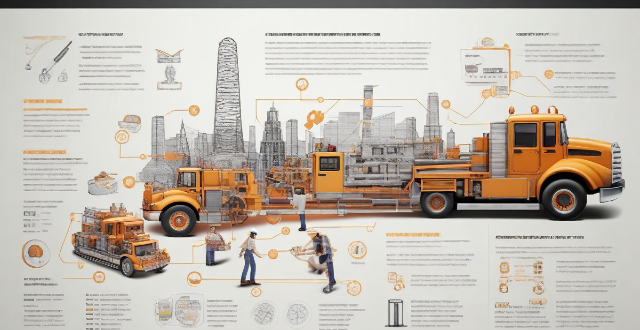
What are the consequences of ignoring safety standards in construction work ?
Ignoring safety standards in construction work can lead to severe consequences, including risk to human life, project delays, financial losses, reputation damage, legal implications, environmental impact, and public safety concerns. Adhering to these standards is crucial for the well-being of all involved parties and the success of the project.
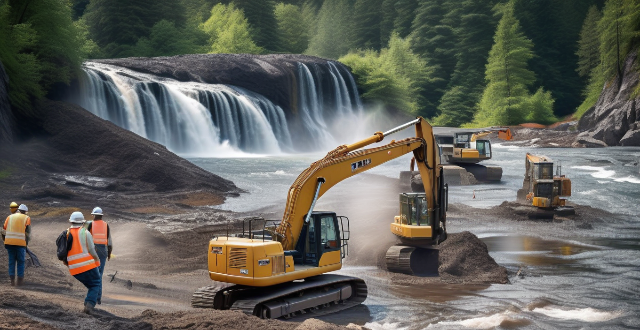
What are some best practices for preventing falls at construction sites ?
Preventing falls at construction sites is crucial for worker safety. Best practices include using fall protection systems like safety nets, personal fall arrest systems, and guardrails; training workers on fall prevention; maintaining a clean and organized work area; conducting regular safety inspections; and ensuring workers wear proper footwear. Following these practices can help prevent accidents and keep workers safe.

How do I identify the best online shopping sites for budget buys ?
How to identify the best online shopping sites for budget buys? 1. Research and compare prices using price comparison websites like CamelCamelCamel, Google Shopping, and PriceGrabber. 2. Check for coupons and promo codes on coupon websites such as RetailMeNot, Honey, and Rakuten before making a purchase. 3. Look for sales and discounts offered by online shopping sites during seasonal events, clearance events, and flash sales. 4. Read reviews and ratings from other customers on review platforms like Amazon, Trustpilot, and Sitejabber to determine the reliability of an online shopping site. 5. Consider shipping costs and return policies when comparing online shopping sites to ensure affordability and convenience in case of returns or exchanges.
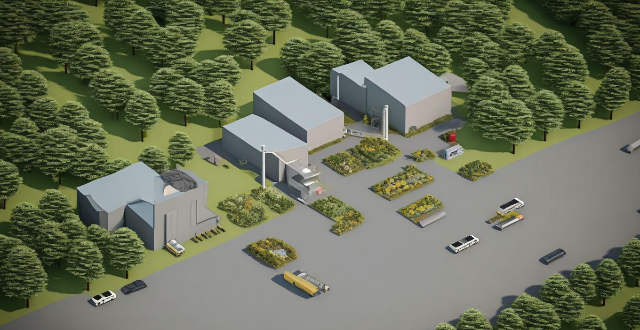
What is the cost of building and maintaining a communication base station ?
The article discusses the costs associated with building and maintaining a communication base station, categorizing them into initial setup costs such as site acquisition, design and engineering, equipment procurement, construction and installation, permits and licensing, and testing and commissioning, and ongoing maintenance costs like rent or lease expenses, power consumption, equipment maintenance, software updates, security measures, and staff salaries. It emphasizes the complexity of these processes and the importance of careful planning and budgeting for such projects.

How do changing climate patterns influence the choice of construction materials and methods ?
Changing climate patterns significantly impact the construction industry, influencing both the choice of materials and construction methods. Here are some key ways in which these changes affect building practices: 1. Durability and Resilience: Adaptation to extreme weather conditions and longevity in face of climate change are crucial. This means choosing materials that are more resistant to water damage, mold, and fungus, as well as constructing structures that can handle high winds without failure. 2. Energy Efficiency: With global temperatures on the rise, there's an increased focus on energy efficiency in buildings. This involves using better insulating materials to reduce heating and cooling needs, such as advanced forms of insulation and double or triple-pane windows. 3. Sustainability: There's a growing trend toward using sustainable, recycled, or renewable materials in construction. Bamboo, reclaimed wood, and recycled steel are examples of materials that have a lower environmental impact. 4. Water Management: With changing precipitation patterns, including both floods and droughts, architects and builders are incorporating rainwater harvesting systems into their designs to collect and reuse rainwater for non-potable purposes like irrigation and toilet flushing. 5. Local Impact and Adaptation: The availability of certain materials may be affected by climate change, leading to a preference for locally sourced materials that require less transportation and are better adapted to local climate conditions. Designers are considering how buildings can be adapted in the future as climate conditions evolve, including spaces that can be easily converted or added onto.
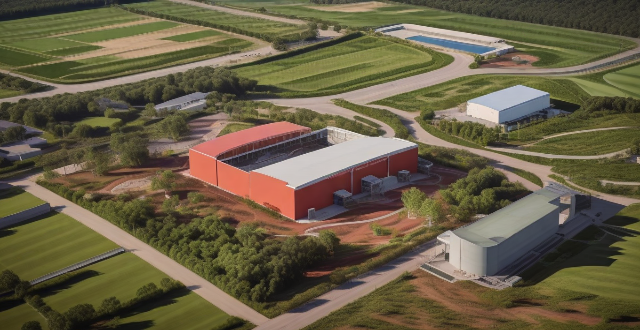
What is the connection between deforestation for stadium construction and increased greenhouse gas emissions ?
Deforestation for stadium construction leads to increased greenhouse gas emissions by reducing carbon sinks, disturbing soil, consuming energy during construction and operation, altering albedo, increasing transportation-related emissions, generating waste, affecting biodiversity, and changing water regulation. Mitigation strategies include sustainable design, using renewable energy, promoting public transportation, carbon offsetting, and effective waste management.